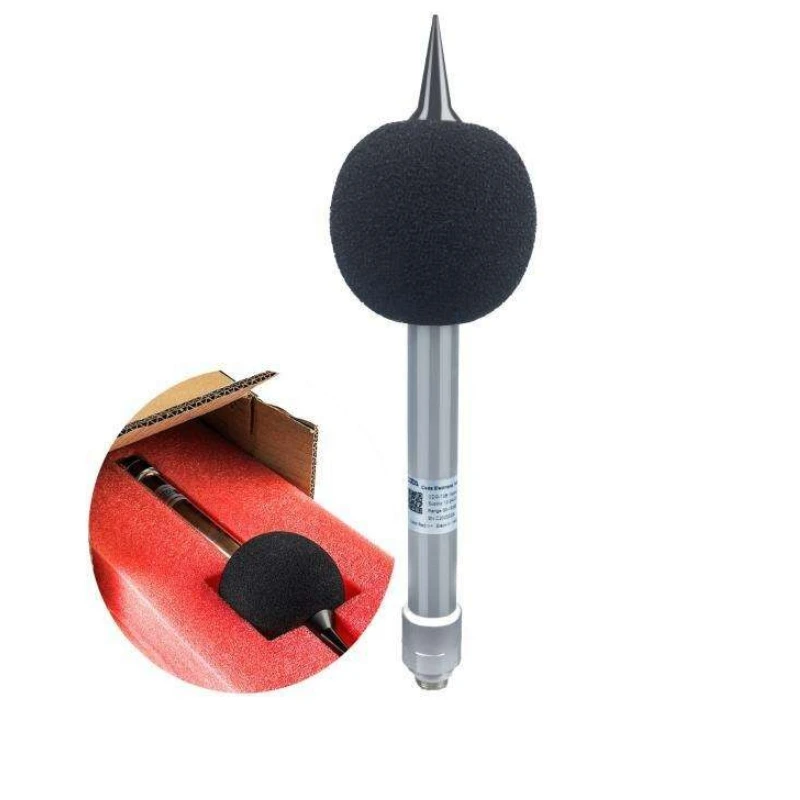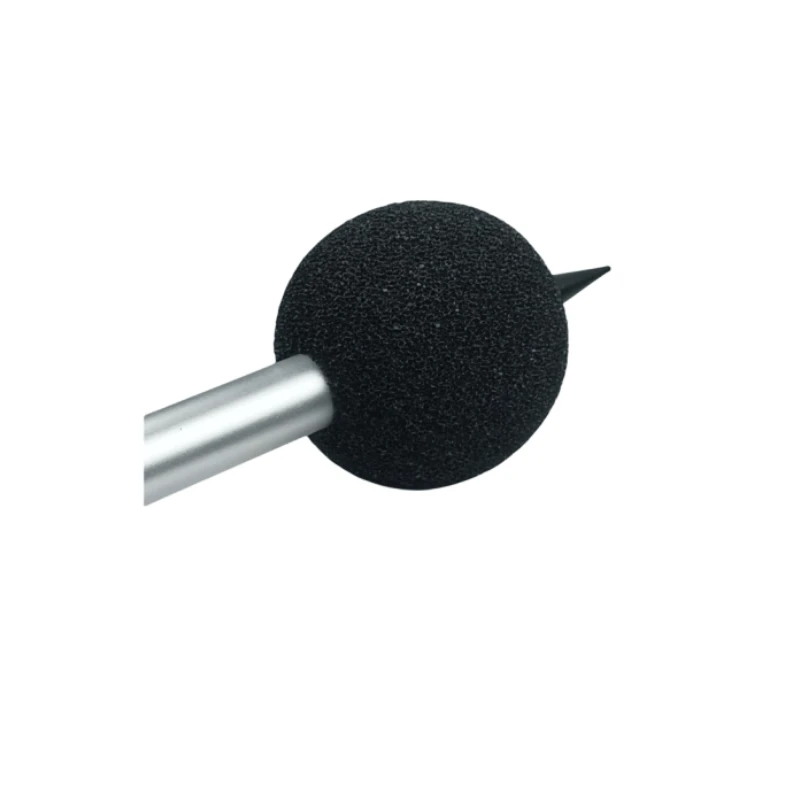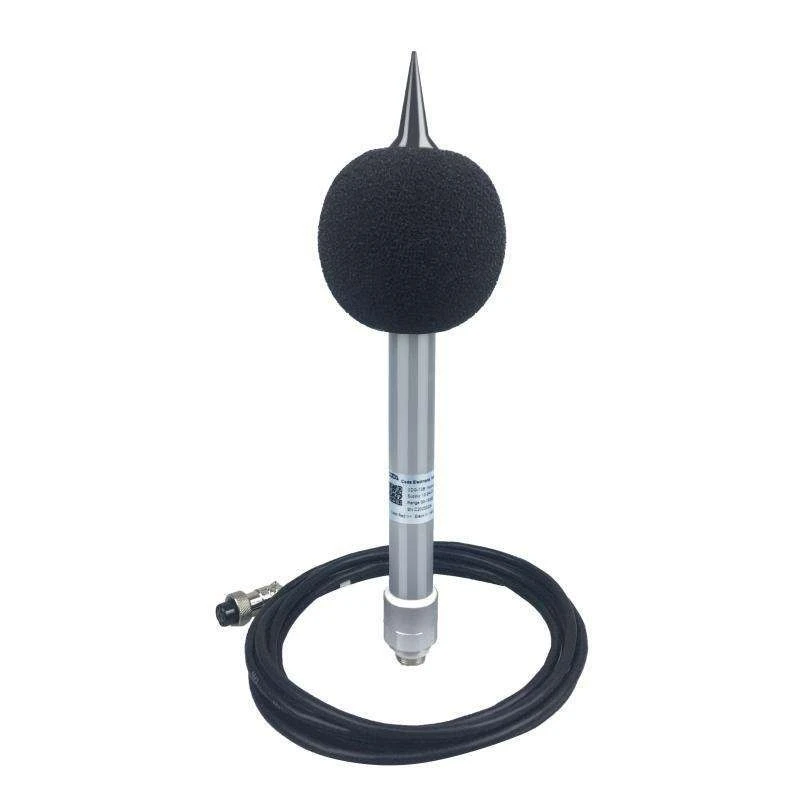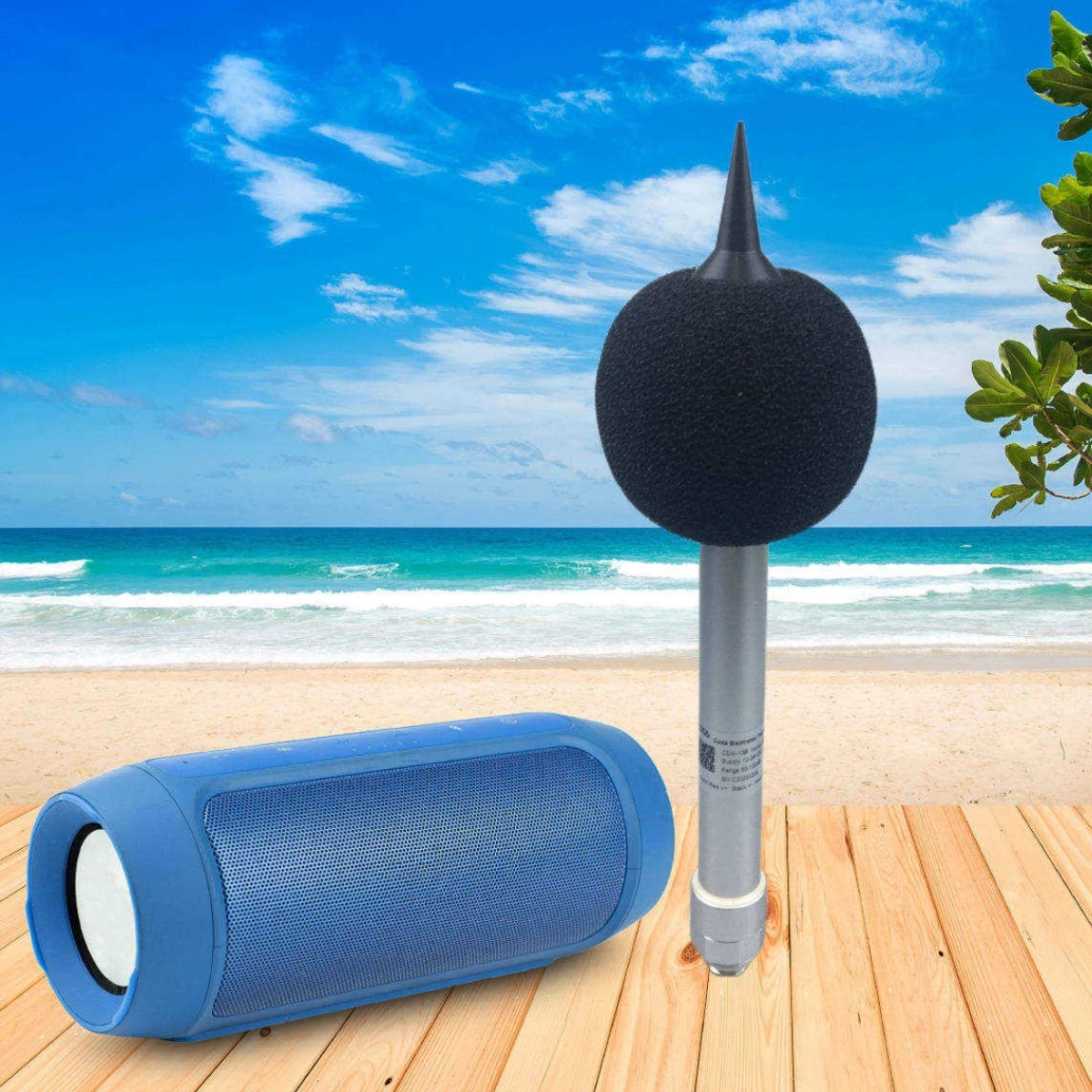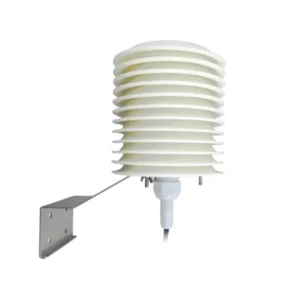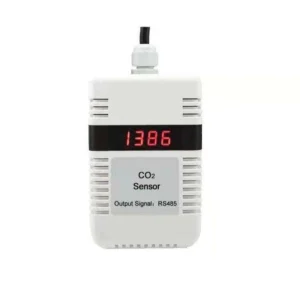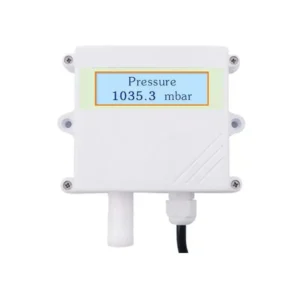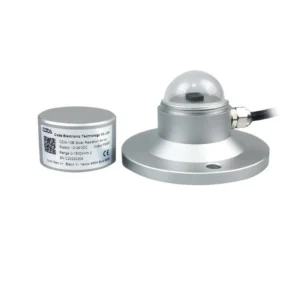Description
CDW-13B Smart Home Outdoor Noise Sensor
The CDW-13B is a sensor that picks up industrial noise. It works as a digital sound level meter. It has a microphone that picks up sounds from 31.5Hz to 8kHz.
This sensor has a chip for processing digital signals. It uses technology for digital detection. It is dependable and steady. It has a broad dynamic range. You do not need to change ranges.
It can be used for many machines, vehicles, ships, and electrical devices to measure sound noise. CDW-13B can helps measure noise in the environment. It keeps workers safe and the workplace clean.
Working Principle of Noise Sensors
Noise sensors are devices that change sound waves into electrical signals. They use special physical processes and signal processing to do this. To understand how they work, we can break their operation into four main stages.
These are sound wave reception, converting mechanical energy to electrical energy, signal conditioning, and data output or analysis. Each stage builds on the last one. It turns raw sound into helpful information about noise levels, frequency, or type of sound.
1. Stage 1: Sound Wave Reception – Capturing Sound Energy
The process starts with the sensor’s ability to “catch” sound waves from the surroundings. Sound moves through air and other materials as waves. These waves have high-pressure spots known as compressions. They also have low-pressure areas known as rarefactions.
They vibrate at certain frequencies, which we measure in hertz (Hz). The strength of the sound is related to its amplitude, which we measure in decibels (dB).
2. Stage 2: Mechanical-to-Electrical Conversion – Changing Vibration into Voltage
The diaphragm vibrates, but this movement by itself is not useful. We need to change this movement into an electrical signal. This signal can be measured and studied.
This conversion is the main part of the noise sensor. It depends on one of three common physical effects. This is based on the type of sensor.
Dimnsion & Mounting
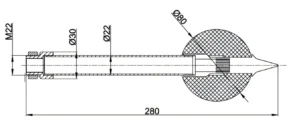
product details show
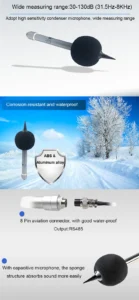
Noise Sensor communications
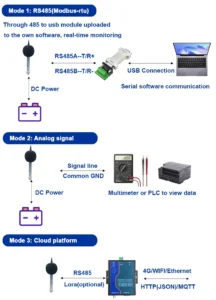
Application
Environmental noise monitoring field:
◉In various parts of the city, such as business, residential, and industrial areas, people use noise detection sensors. These sensors track noise levels over time. Workers can install them on building walls, street light poles, and other places.
In a neighborhood close to a highway, a noise sensor can measure traffic noise levels in real time.
Building field:
◉During building construction, many machines make a lot of noise. This includes pile drivers, concrete mixers, and cranes.
Workers set up outdoor noise detection sensors at the construction site or on nearby buildings. These sensors check if construction noise goes over set limits.
Transportation sector:
◉Noise level sensors check traffic noise near busy roads, train tracks, and airports. For example, near the airport runway, planes make a loud noise when they take off and land.
Noise Detection News
What are the different types of sensor noise?
What Is The Environmental Sensor? | Coda Weather Station
How Do Noise Sensors Work? | Coda Weather Sensor
What Examples For Different Types Of Weather Instruments?
What Is The Relationship Between RS-485 And Modbus? | Coda
